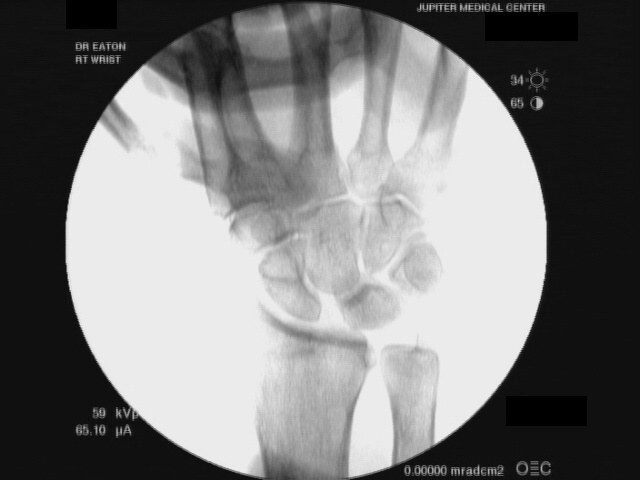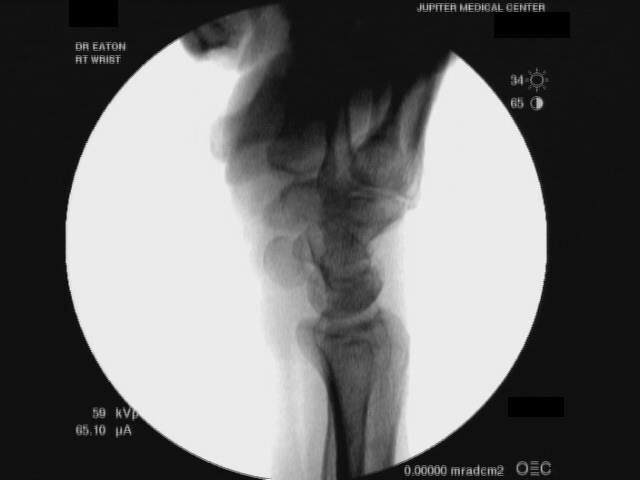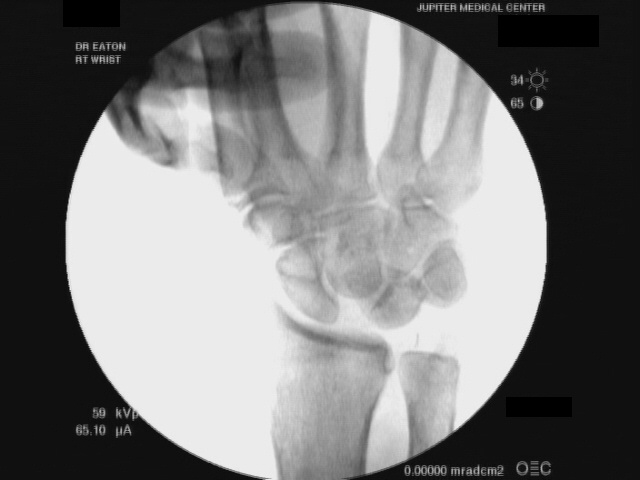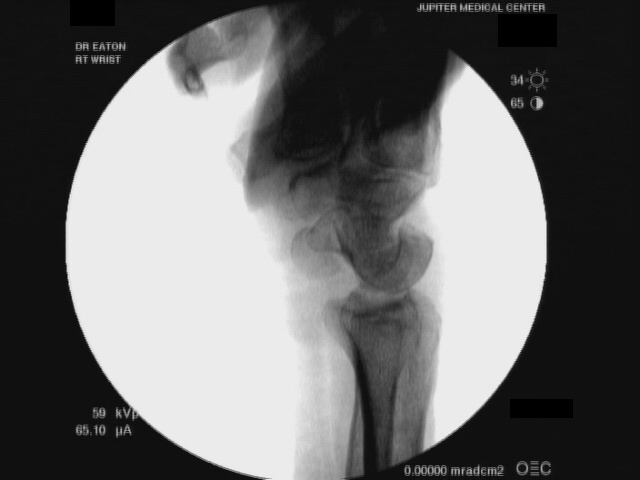Clinical Example: Perilunate Instability
| The lunate, like other
carpal bones , has no muscular attachments, and its position relative
to its neighbors depends on adjacent compressive forces and ligamentous
restraints. Perilunate instability results from insufficiency of its
restraining ligaments. The lunate posture fails into dorsal rotation
and palmar subluxation more often than into the opposite orientation.
This may result in either subluxation or lunate dislocation. Acute
trauma may result in either purely ligamentous perilunate instability
or perilunate fracture-dislocations. |
| This patient presents
with a history of morning wrist stiffness and pain, not limiting
activities. He plays golf daily. He has a full painless range of wrist
motion, although intermittently develops a firm mid dorsal prominence
which can be corrected with local pressure. There is no history of
major trauma, but the patient has sustained many falls over his life
from imbalance due to Friedreich's
ataxia. Xrays show scapholunate dissociation with dorsal scaphoid
rotation: |


| Minimal passive
manipulation results in dorsal lunate dislocation which can be reduced
easily, all without pain: |


| Fluoroscopy confirms
painless dorsal lunate dislocation, reduced with finger pressure on the
dorsal lunate. This presents a treatment dilemma, as he has full range
of motion, and despite intermittent pain, no limitations of daily
activity. |
| Search
for... perilunate instability |
Case Examples Index Page | e-Hand home |